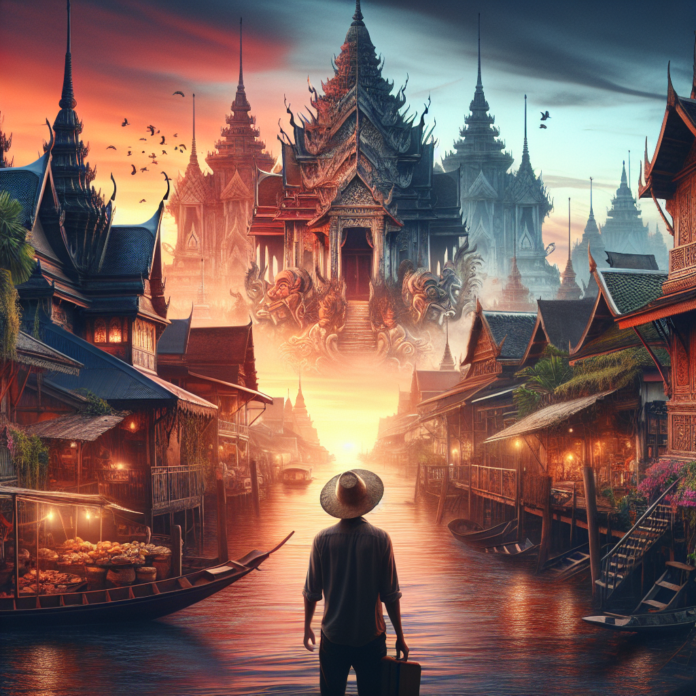[ad_1]
Bangkok, the capital city of Thailand, is known for its bustling streets, vibrant markets, and delicious street food. However, beyond the modern skyscrapers and bustling city life, Bangkok is also home to a rich history that dates back hundreds of years.
For history buffs and curious travelers alike, exploring Bangkok’s hidden historical gems can be a rewarding and enlightening experience. From ancient temples to opulent palaces, Bangkok is full of historical sites waiting to be discovered.
Exploring Bangkok’s Historical Sites
One of the most iconic historical sites in Bangkok is the Grand Palace. Built in 1782, the Grand Palace served as the royal residence for the Kings of Siam for over 150 years. Today, the Grand Palace is a stunning example of traditional Thai architecture and is open to visitors who want to learn more about Thailand’s royal history.
Another must-visit historical site in Bangkok is Wat Pho, also known as the Temple of the Reclining Buddha. This famous temple houses the largest reclining Buddha statue in Thailand, measuring 46 meters long and 15 meters high. Visitors can explore the temple grounds and marvel at the intricate design and craftsmanship of the Buddha statue.
For a glimpse into Bangkok’s more recent history, visitors can explore the Jim Thompson House. This beautiful traditional Thai house was owned by Jim Thompson, an American businessman and art collector who played a significant role in reviving Thailand’s silk industry. Today, the Jim Thompson House is a museum dedicated to Thompson’s life and his collection of Southeast Asian art.
Uncovering Hidden Gems
While the Grand Palace, Wat Pho, and the Jim Thompson House are well-known historical sites in Bangkok, the city is also full of hidden gems waiting to be discovered. One such gem is the Erawan Museum, a unique three-headed elephant structure that houses a collection of religious artifacts and antiques.
Another hidden gem in Bangkok is the Baan Kamthieng House Museum, a traditional Thai house located in the heart of the city. This museum offers visitors a glimpse into traditional Thai village life and showcases artifacts and exhibits related to Thai culture and history.
For those interested in Bangkok’s more recent history, a visit to the Bangkokian Museum is a must. This small museum is housed in a restored shop-house and offers insight into the daily lives of Bangkok residents from the early 20th century.
FAQs
Q: Are there guided tours available for exploring Bangkok’s historical sites?
A: Yes, there are many tour companies in Bangkok that offer guided tours of the city’s historical sites. These tours typically include transportation, entrance fees, and a knowledgeable guide who can provide insight into the history and significance of each site.
Q: Can I visit the Grand Palace and other historical sites on my own?
A: Yes, visitors are welcome to explore the Grand Palace and other historical sites in Bangkok on their own. However, it is recommended to do some research beforehand to learn about the history and significance of each site, as well as any dress codes or etiquette guidelines that may apply.
Q: What is the best time of year to visit Bangkok’s historical sites?
A: The best time to visit Bangkok’s historical sites is during the dry season, which typically runs from November to February. During this time, the weather is cooler and less humid, making it more comfortable for exploring outdoor sites like the Grand Palace and Wat Pho.
Q: Are there any lesser-known historical sites in Bangkok that are worth visiting?
A: Yes, Bangkok is full of lesser-known historical sites that are worth visiting, such as the Phaya Thai Palace, the Suan Pakkad Palace, and the Bang Khun Phrom Palace. These sites offer a unique glimpse into Thailand’s royal history and architectural heritage.
Q: Is it possible to combine a visit to Bangkok’s historical sites with other attractions in the city?
A: Yes, many visitors choose to combine a visit to Bangkok’s historical sites with other attractions in the city, such as shopping at the Chatuchak Weekend Market, cruising along the Chao Phraya River, or exploring the vibrant street food scene in Chinatown. This allows travelers to experience the rich history and culture of Bangkok alongside its modern attractions.
[ad_2]


